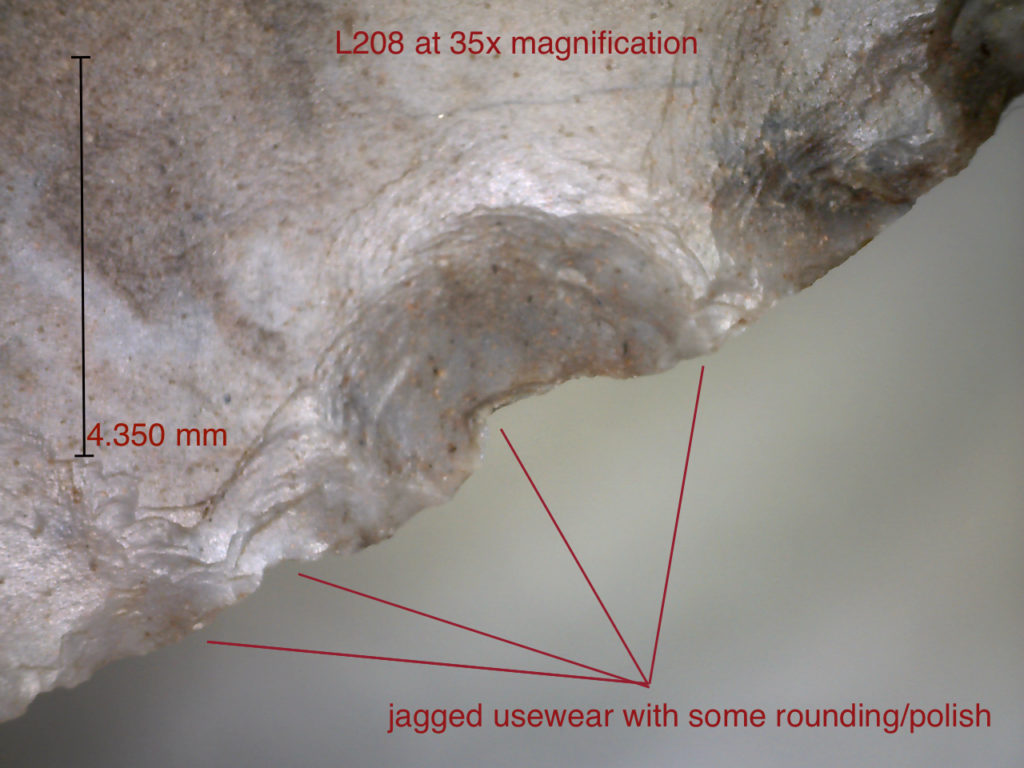A Lithic Analyst’s Ode to a Stone Knife
The loss of a favourite pocket knife was an alarming incident for many a young boy or girl growing up. Maybe it was the perfect whittling knife we carried with us as Scouts or Guides, or a “coming-of-age” gift from Grandpa. Nevertheless, in a few days we got over the loss. Now imagine if we used that very knife, needed that knife, to live and survive, to perform duties that could have life or death consequences for us or our family. That knife would be a very important part of our lives, performing far more important duties than mere rope cutting and marshmallow stick whittling.
This year, ASI rediscovered such a cherished knife lost to the ages in a present day farm field. It is a knife that can tell us so much more than any modern day accessory ever could, a story that hints at daily life in ancient Ontario.
How was the knife made?
Made of Onondaga chert, this knife measures over 70mm in length and is formed from an elongated primary flake someone removed from a large chert block using a hammerstone. It is at this point where the knife’s maker really left his or her mark on their tool.
Once removed from the block of chert, its maker set out to make several modifications and refinements to the large stone flake created to produce the knife. At one end of the knife two flakes, flute-like, identical in length, were expertly removed to thin the knife. This thinning was likely done to help fasten a handle using animal sinew as a binding, possibly then coated with tree sap or pine pitch to secure it. After some use, it appears that the addition of the handle proved not to be effective, due to the short haft scars relative to the overall size of the knife, and so the knife was instead held by hand.
It’s a rare treat to be able to interpret “handedness” in the archaeological record! On one face of the knife is another flake scar that perfectly fits the thumb of a left-handed person and shows evidence of wear and polish from repeated handling. There is a swale on the opposing face of the knife perfectly fitted to the lower portion of a forefinger. In short, this tool just feels comfortable when held in the left hand. We shared this remarkable knife with Canadian master flintknapper Dan Long who declared it “a very cool tool!” based on its design.
How was the knife used?
The tool still has more to tell pertaining to its use. Along the curved blade there are tiny flake removals, and under closer magnification scratches, striations, rounded wear and a jagged edge that all point to the knife having been used to saw through animal bone and in de-fleshing activities.
Holding the knife today, you can feel how perfectly it fits in your hand. I can imagine the presence of the person who created it a long time ago to help make their lives, and those of their loved ones, as comfortable as was possible in a very different Ontario. The chert knife played a very important role thousands of years ago in the survival of a family, in a time when if you needed a tool to perform a certain task you had to make it yourself.













